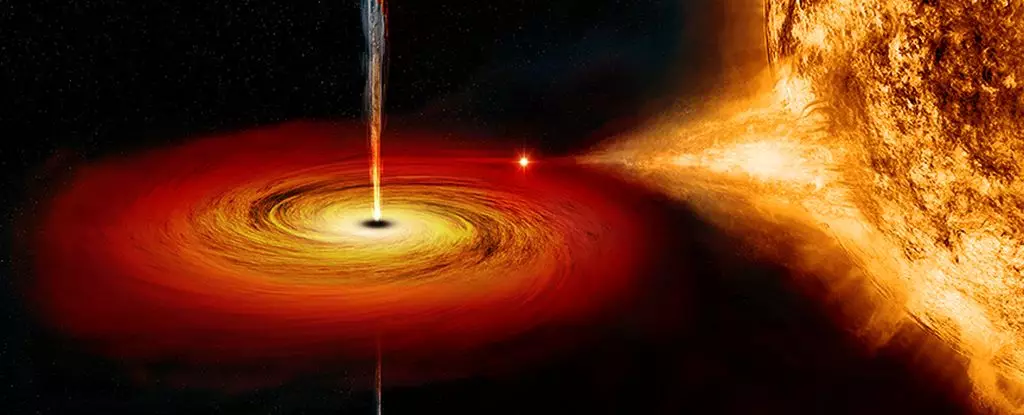The recent research findings regarding the mechanics of matter falling into a black hole have shed light on a phenomenon predicted by Einstein’s theory of gravity. The discovery of the ‘plunging region’ outside the event horizon of a black hole has provided new insights into the behavior of matter as it approaches the point of no return. This groundbreaking study has not only confirmed a long-standing theoretical prediction but has also opened up new possibilities for studying the extreme gravitational fields near black holes.
The Concept of Matter Falling into a Black Hole
The process of matter falling into a black hole is not a straightforward journey but rather a complex and dynamic movement. As material approaches a black hole, it doesn’t simply follow a straight path but instead spirals and swirls around, akin to water flowing towards a drain. This behavior has been compared to swirling water vortices, which scientists use as a model to understand the environment around black holes. Einstein’s theory of gravity postulated that at a certain distance from a black hole, material would no longer be able to maintain a stable orbit and would plunge directly towards the center, akin to water cascading over a waterfall.
The recent study, led by theoretical physicist Andrew Mummery and his colleagues at Oxford University, focused on analyzing X-ray data from an active black hole known as MAXI J1820+070. By developing numerical simulations and models of the plunging region, the researchers were able to identify emissions that matched the observational data obtained from the black hole system. The presence of an additional glow detected during an outburst in 2018 provided crucial evidence supporting the existence of the plunging region, as speculated in previous studies.
The confirmation of the plunging region’s existence has significant implications for the study of black holes and their surrounding gravitational fields. With this new understanding, scientists can now utilize black holes as tools to investigate the strongest gravitational forces in the universe. By studying the behavior of matter as it enters the final area around black holes, researchers aim to gain a comprehensive understanding of gravitational forces under extreme conditions.
The recent revelation of matter falling into black holes and the identification of the plunging region have provided a unique glimpse into the behaviors of material in the vicinity of these enigmatic cosmic entities. This breakthrough not only validates Einstein’s predictions but also opens up new avenues for exploring the extreme gravitational fields surrounding black holes. As scientists continue to unravel the mysteries of these cosmic phenomena, the discovery of the plunging region marks a significant advancement in our understanding of the universe’s most powerful gravitational forces.


Leave a Reply